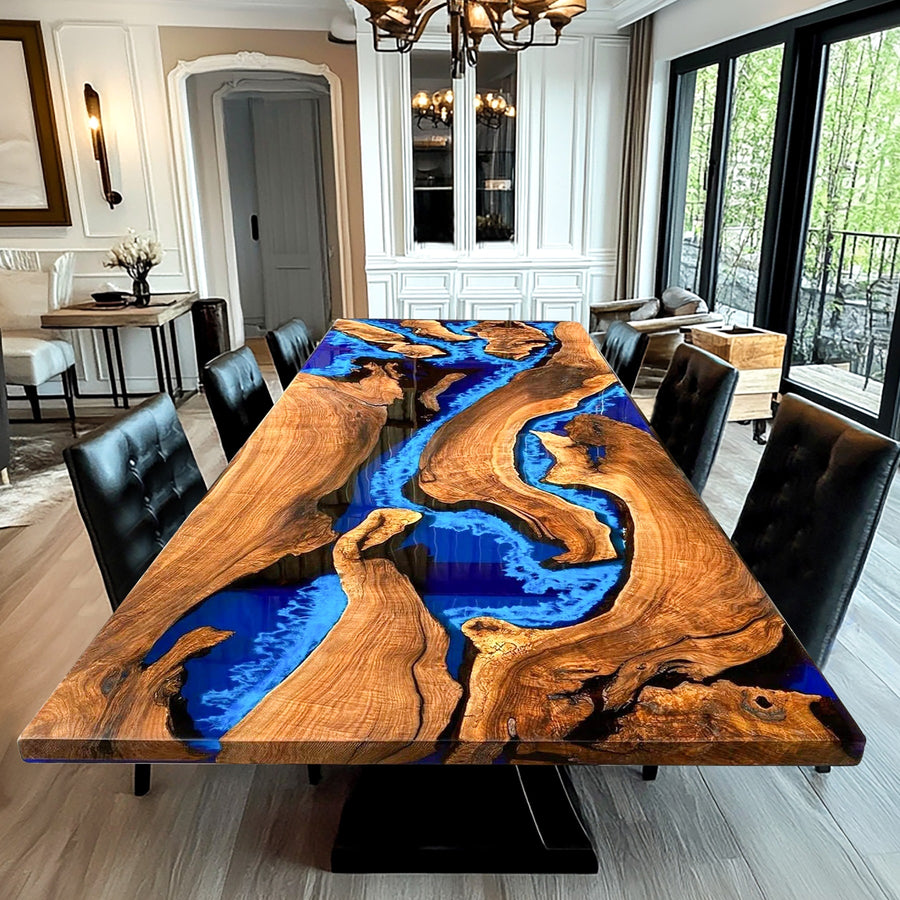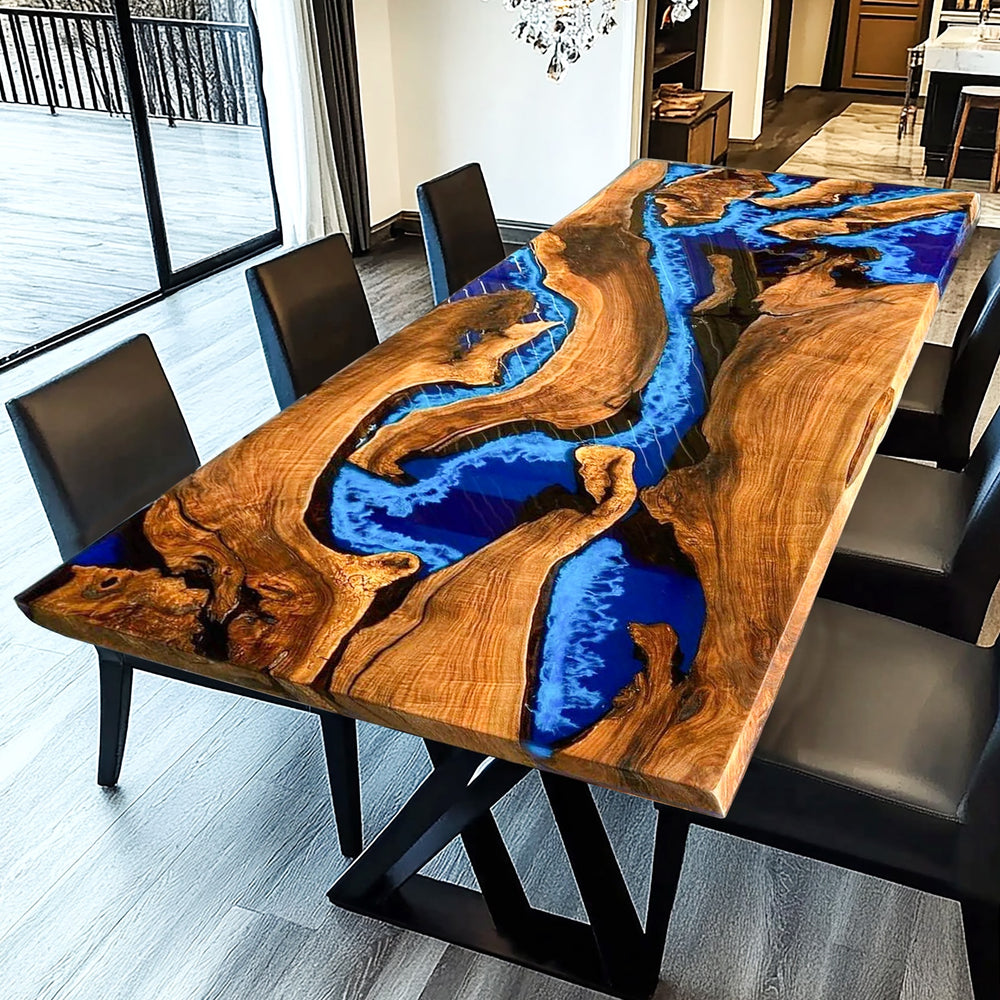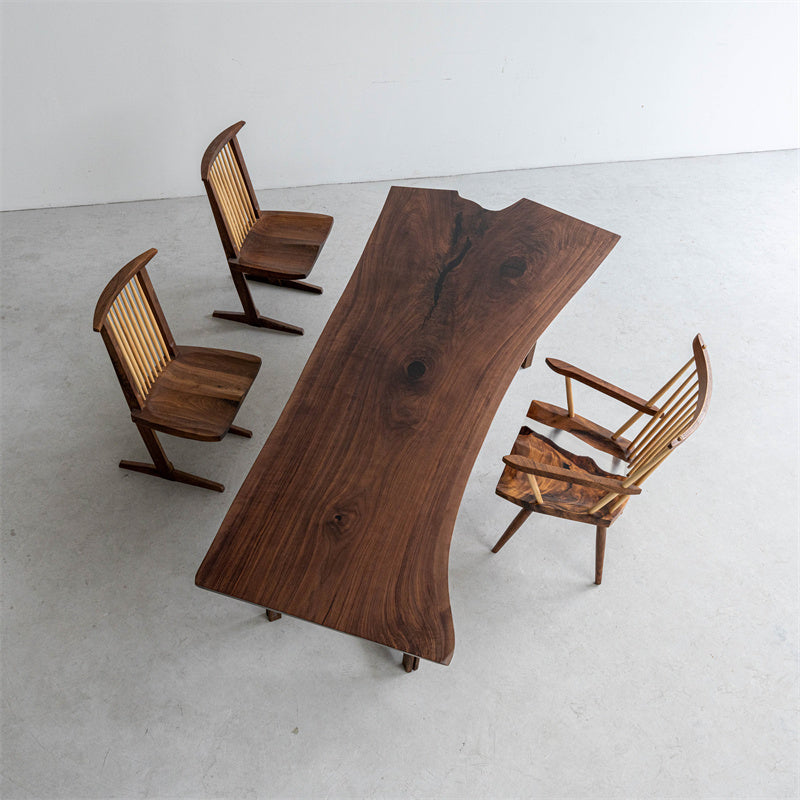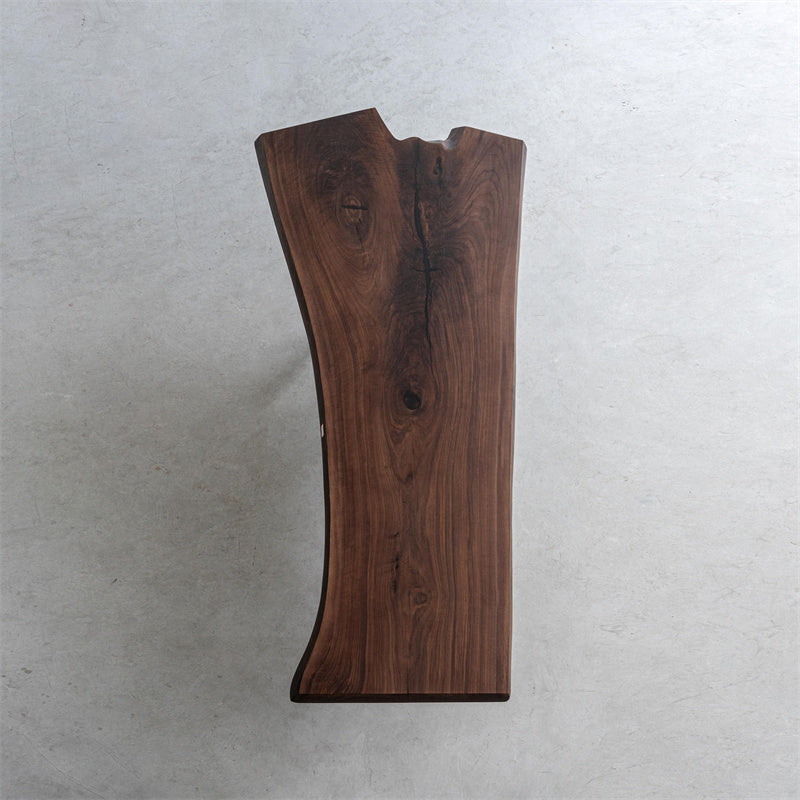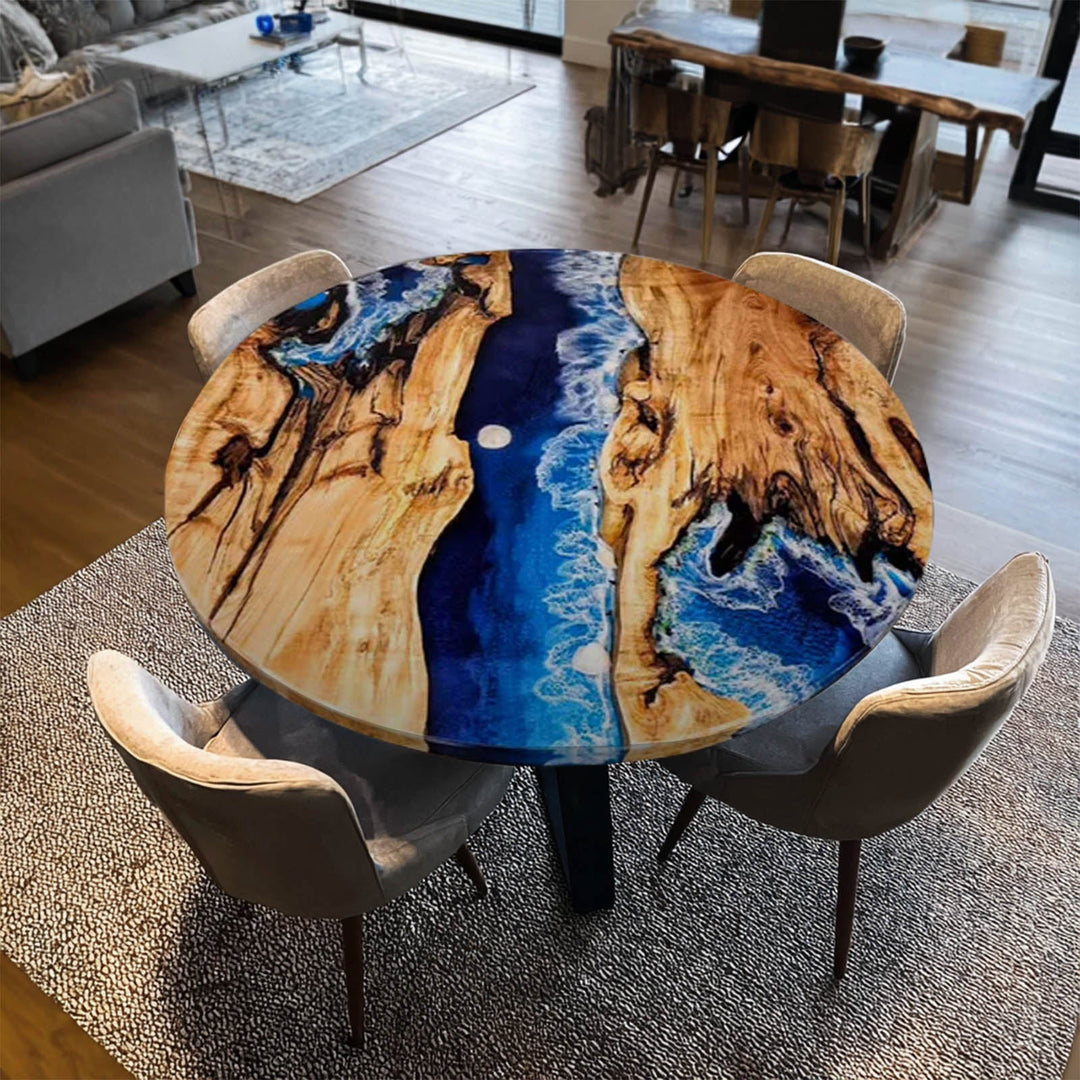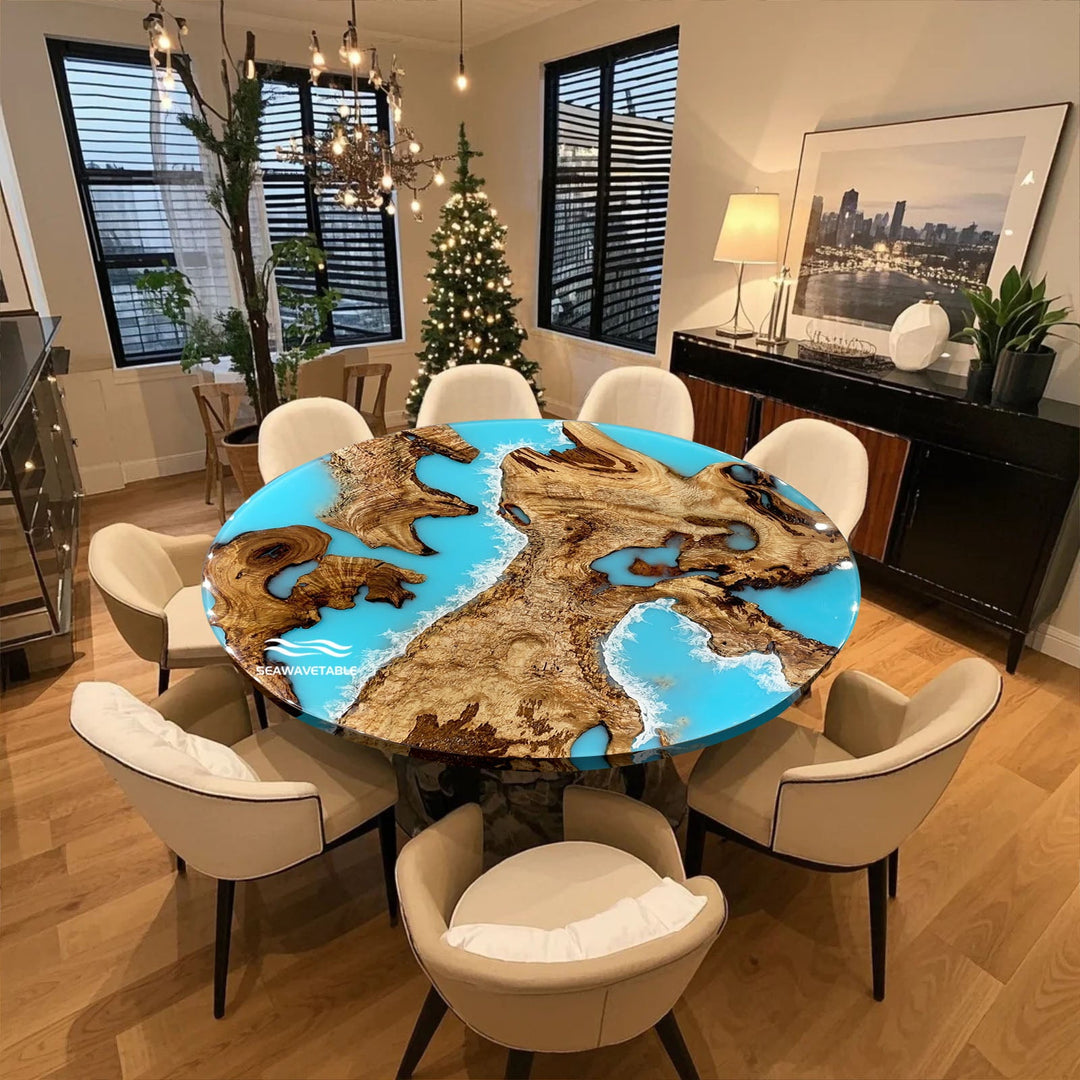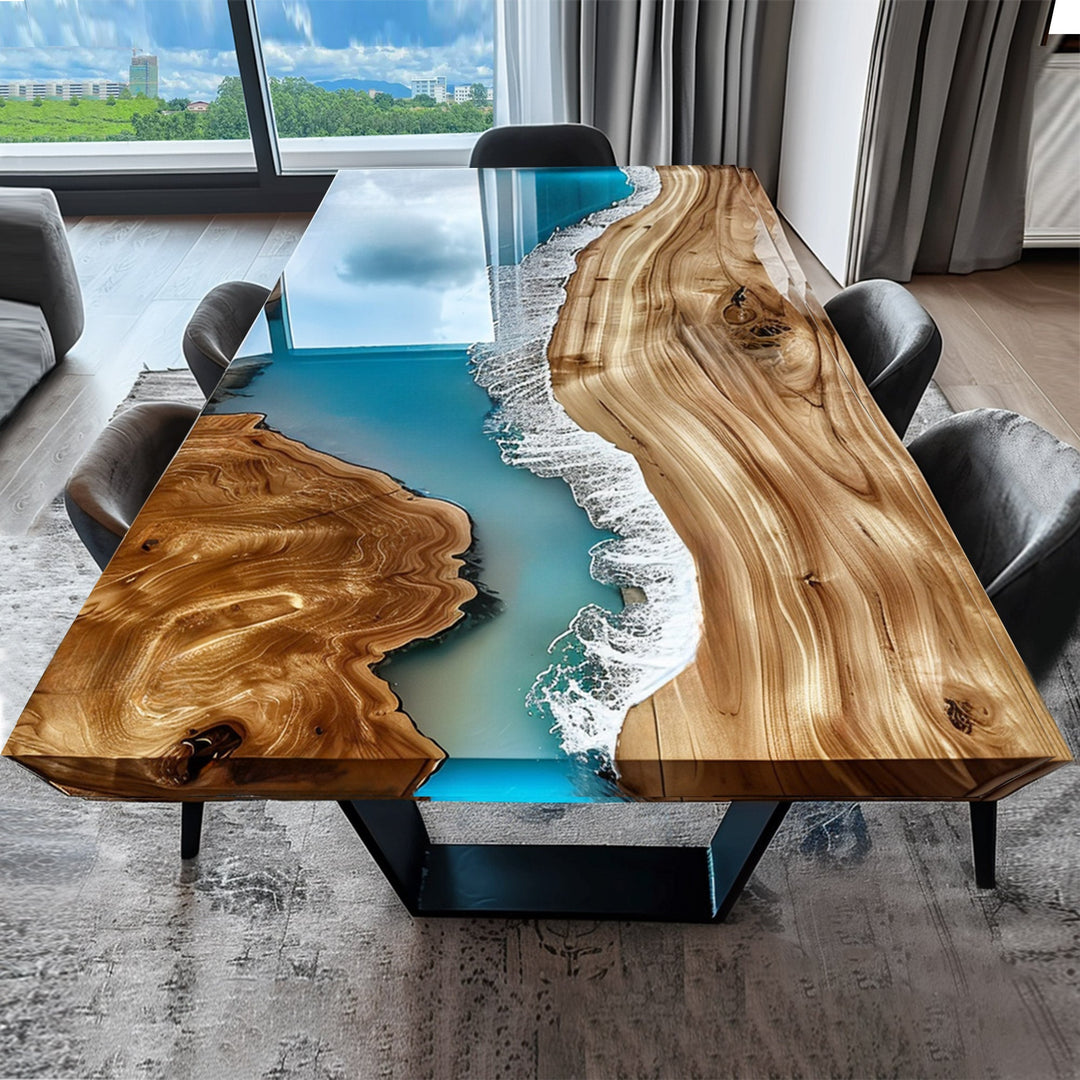Live Edge Wood: The Soul Behind Epoxy River Wood Tables

In recent years, epoxy river wood tables have become one of the most coveted centerpieces in modern interior design. These remarkable pieces of furniture bring together the best of natural imperfection and contemporary craftsmanship. While much attention is often given to the mesmerizing flow of colored resin, the true heart of these tables lies in the live edge wood that surrounds it.
But what exactly is live edge wood? Why has it become such an important feature in high-end furniture, and especially in river tables? Let’s dive into the essence of live edge — and why it matters so much.
What Is Live Edge Wood?
Live edge wood refers to wooden slabs that retain the natural, uncut contour of the tree's outer edge. Unlike mass-produced, uniformly milled boards, live edge woods preserve the tree’s organic shape, which includes its curves, knots, bark lines, and even occasional voids or insect tracks.
This edge is not cleaned up or reshaped into straight lines. Instead, it is celebrated — highlighting nature’s own design. Whether the slab comes from walnut, olive, oak, or poplar, each piece tells a visual story that cannot be replicated or mass-produced.
The Role of Live Edge in River Tables
In the context of epoxy river tables, live edge serves both a functional and aesthetic purpose.
Two slabs of live edge wood are placed with their natural sides facing inward, creating an organic-shaped gap between them. This gap is then filled with colored or transparent epoxy resin, forming the illusion of a river flowing between two land masses.
Without the live edge, the resin would simply sit between two straight lines — neat, but lifeless. With the natural edges intact, the resin flows organically, often mimicking geological features like canyons, waterways, or lava streams.
It is this harmony between nature and design that transforms a table into a work of art.
Every Slab Has a Story
No two live edge slabs are the same. They come from individual trees, each with its own growth rings, natural scars, and history. A single slab might contain ripples of grain formed over decades, dark streaks from mineral deposits, curling edges shaped by wind or water, burls (growth deformations) that add stunning patterns.
Choosing live edge means choosing uniqueness. You’re not buying a table — you’re investing in a narrative, one that’s been forming in nature for years before it ever reached a workshop.
The Craftsmanship Behind the Edge
Live edge wood requires specialized craftsmanship. Unlike regular wood, which can be milled and cut with uniform machinery, live edge slabs must be handled individually.
First, the slabs undergo natural air drying or kiln drying, often taking several weeks to reach an optimal moisture level that prevents future cracking or warping.
Then, the edges are carefully cleaned. In some cases, the bark is preserved; in others, it’s removed to reveal the amazing grain beneath. The artisan must decide how to respect the natural form while also creating a balanced composition.
Once the wood is prepared, it’s paired with a complementary slab. The gap is measured, sealed, and then resin is poured — often in multiple layers over several days. After curing, the entire piece is sanded, polished, and finished with oils or coatings to protect the wood and enhance its depth.
A Dialogue Between Nature and Design
What sets epoxy river tables apart is their contrasting yet harmonious elements:
- The raw, textured, irregular edge of the wood
- The smooth, glass-like flow of the resin
- The timeless feel of nature paired with the boldness of modern design
Live edge serves as the bridge between these worlds. It brings warmth, authenticity, and unpredictability — qualities that make every river table an emotional and visual experience.
In a world increasingly dominated by machine-made sameness, live edge wood stands as a symbol of individuality, craftsmanship, and connection to nature. When used in an epoxy river table, it doesn’t just support the resin — it defines the piece.
It is the soul of the table, telling the story of a tree’s life, shaped by weather, time, and terrain. And now, with the artisan’s touch, that story continues — as the centerpiece of your home.


